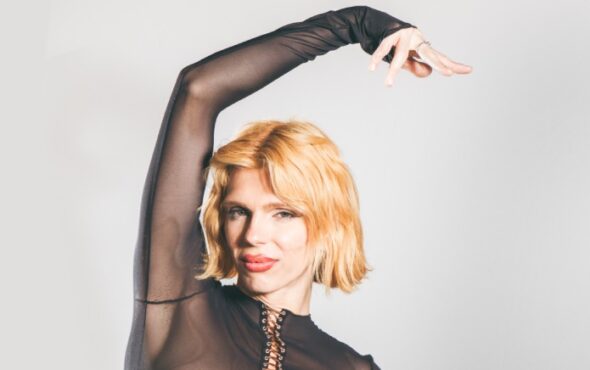
Members of the LGBTQ+ community are calling for a Pride flag that further incorporates Black, brown, and transgender voices.
In June, the Castro Lesbian, Gay, Bisexual, Transgender, and Queer Cultural District (CQCD) in San Francisco voted to replace the Pride flag in Harvey Milk Plaza which dons the original Gilbert Baker design.
The vote was petitioned to Castro Merchants, a non-profit business association that has rights over the flagpoles, according to CNN.
Following the vote, the Merchants will have the penultimate say on whether the flag change will be made.
The CQCD Advisory Board voted in favour (7-2) to have the original Pride flag design changed to the Progress Pride Flag. The traditional rainbow flag was updated, in 2018, by activist Daniel Quasar.
This new variation was designed to better recognise the trans community, queer people of colour and to honour the lives of those who died due to AIDS complications. Quasar, who is queer and non-binary, said their aim was to “shift focus and emphasise to what is important in our current community climate.”
This updated flag includes black, brown, light blue, white and pink stripes alongside the original colours of the Pride flag. These added stripes have been included to recognise Black, Brown and transgender members of the LGBTQ+ community.
The Gilbert Baker Pride Flag was first unveiled at the San Francisco Gay and Lesbian Freedom Day Parade on 25 June 1978, the flag was created by American artist and gay rights activist Gilbert Baker to reflect the diversity of the LGBTQ+ community.
According to Baker, pink represents sex, red for life, orange for healing, yellow for sun, green for nature, turquoise for magic, blue for serenity and purple for spirit. Following his death in 2017, California state senator Scott Wiener said Baker was instrumental in defining “the modern LGBT movement”.
The call for the changing of flags in prominent LGBTQ+ spaces is not a new occurrence. In 2017, Philadelphia unveiled a new version of its Pride flag which is called the More Colour, More Pride Flag. The flag includes both Black and Brown stripes to the traditional rainbow flag.
The Philadelphia-based campaign group More Colour More Pride debuted a brand new eight-stripe flag in 2017 to coincide with Pride Month. You can read our interview with Amber Hikes, Executive Director of the Mayor’s Office for LGBT Affairs in Philadelphia and developer of the flag, in which she explains the importance of the eight stripes, here.
The LGBTQ+ Community Center in New York City also displays an iteration of the Gilbert Baker flag outside its office, which features black and brown stripes and the organisation’s name.
A spokesperson of the community, told CNN, that the flag was to ” express solidarity, expand inclusivity, and communicate acceptance” and is “one of the ways we can visibly acknowledge and celebrate the colourful plurality of our community.”
Speaking to CNN, Eric Stanley, an associate professor in the Department of Gender and Women’s Studies at the University of California, conveyed the importance of acknowledging the role Black and Brown people played in the demand of LGBTQ+ rights, particularly in historic moments such as Stonewall and Compton’s Cafeteria riot.
“As is well documented, Black, Brown and Indigenous people have been central in every part of trans/queer liberation movements,” Stanley said.
“[I]t was mostly low-income street queens, again many of them Black and brown, who fought the cops in the streets outside the Stonewall Inn three years later,” they added.
Joss Greene, an early career fellow in sociology at Columbia University, agreed with Stanely and told CNN it was time for history to incorporate voices that had long been overlooked.
“Recognizing the organizing legacy of trans women of colour is important, not only as an act of honouring people’s contributions but because it provides us with models and lessons for activism today,” Joss explained.
You can read more about the various Pride flags that exist in our GAY TIMES flag feature dedicated to explaining and educating readers on LGBTQ+ topics.



